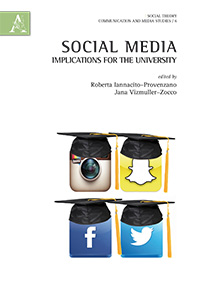
The following are critical comments on the content of the YouTube video of a presentation given by Jasmina Tesanovic and Bruce Sterling entitled Future Domestic Robots: Design Fiction and the Home of the Future. Although theirs is not the only way of looking at design fiction and designing future, it is a starting point and a rich mine full of bits and pieces of thought. You can watch it here: https://www.youtube.com/watch?v=vyb6JgWDSvg.
While the idea of design fiction, defined by Bruce Sterling as “a form of design that has an audience”, seems intriguing and full of promise, in actuality the gist of the design production of fiction and its connection to designing future is problematic. Designing things that are fictional, mythological, futuristic right now creates more problems than it solves. My take on design fiction belongs to the realistic and critical camp, rather than that of unquestioning acceptance and adoption, not to mention adoration. Three main ideas are the foundation of what follows: 1) the generation of waste 2) the false sense of “anything is possible by anyone” 3) conscientious and conscious language use.
1) The generation of waste
Anyone who has designed and produced something knows that the way to a finished product is punctuated with waste, garbage, junk: only one prototype remains and even that does not guarantee its adoption by everyone. The saddest part of design fiction is that the people who are involved in this enterprise know that they are producing an exorbitant amount of garbage but they just shrug it off and laugh about it. In the video program, there was an example of the OCAD group inventing things which may be in use in 2025: all of them were made of plastic! Where will these “invented things” end up? There seems to be no sense of the finiteness of natural resources. And, needless to say, the extollment of 3D printing has no bounds, again, without awareness of the fact that the machine will “print” 99.9% of things which are waste.
2) The false sense of “anything is possible by anyone”
It is customary in the post-modern world to accept the fact that “the burden is on the user” and “do-it-yourself” is praised as the epitome of human creativity. In the video program, Sterling exclaims: “Just go and do a project!”, “Make your own stuff!”. However, talking about Casa Jasmina, both Tesanovic and Sterling fail to mention where their financial backing comes from: granted, they may be independently wealthy (after all, they are “married emigres” as Sterling puts it) and the abandoned factory in Torino may not have costed much, but they do have to have robotic technology (lots of it and of an up-to-date kind), pay taxes, so they do need money. They do not mention the amount of free (?) help they get from the “squatters” who apparently use open source information. Their works presented in an installation version are sought after by museums (who also do their own de-accessing, i.e. separation of what stays and what is junk: see 1) above), and certainly the installation costs the museum a nice sum. Furthermore, they “do not want to be depended on Google”. This is simply to underline the fact that projects such as these look beautiful on the outside, doable, and accessible to anyone; the truth is that unless the individual is backed by an institution, a university, a museum, and paid by these, the design fiction works would not be realizable.
3) Conscientious and conscious language use
The language used especially by Sterling (writer, novelist, lecturer) is really thought-provoking without being accountable. He uses the adjective “moral” in two phrases: “our work has moral effects on society” and “ours is a moral gesture”, and yet nowhere in this video program there is an explanation of what these “moral” effects and “moral” gestures really signify. As if social responsibility and social awareness were a side-product of design fiction.
Tesanovic notes: “The stuff you have determines your lifestyle.” The assumption is therefore, “have more robotically-supported stuff , so you will have a better lifestyle”. The consumption’s doors have opened yet more widely… She is also surprised that a UN group wants to use the Casa Jasmina: theirs is not a business but an avocation.
They both claim that they do not want to be anyone’s “users” or “clients”. Nevertheless, they are users of technology and clients of Arduino and internet providers.
In conclusion, to design things that so far exist only in the imagination and fiction must surely be extremely satisfying. However, as these designs are also projected into the future, it looks like humanity must elaborate and generate different fictions in order to design a more creative future. It may be true, as Sterling claims at the end of the video, that technological breakthroughs are chipping away at the fine metaphysical line between what is real and what is imaginary, but technology by itself will not solve the more pressing problems humanity is facing right now.


